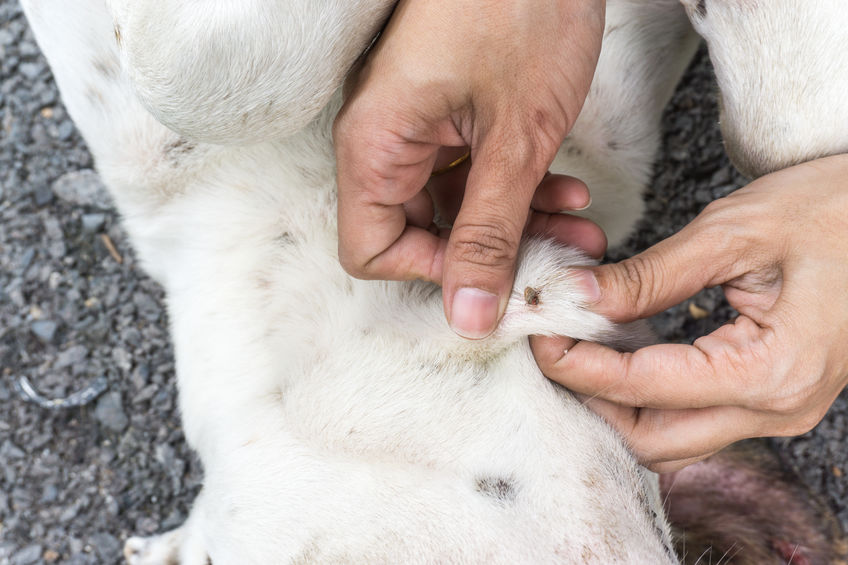
Dogs are no strangers to trekking through high grasses and deep woods, but even a quick hike on a local trail with your dog can expose them to ticks. It’s important to check dogs for ticks, even if you only let them out in your yard. Ticks are tiny blood-sucking parasites that can transmit a variety of diseases to both humans and animals. Lyme disease is one of the most common tick-borne illnesses affecting dogs. If left untreated, it can cause serious health problems, and in some cases, it can even cause kidney failure. In this blog, we’ll walk you through the steps of properly checking your dog for ticks and removing them, as well as monitoring for signs of Lyme disease.
How to Check Your Dog for Ticks
Checking your dog for ticks is a crucial part of keeping them healthy, especially if they spend time outdoors. Remember, even dogs that only play in the backyard can come into contact with these pests. Ticks can hitch a ride on other animals or be carried by the wind, so it’s important to stay vigilant.
- Start with a visual inspection: Look over your dog’s entire body, paying close attention to areas where ticks like to hide. These include the ears, around the eyes, under the collar, between the toes, and in the groin area. Ticks can range in size from the head of a pin to the size of a pencil eraser, so keep an eye out for anything that looks out of place.
- Feel for bumps: Run your fingers through your dog’s fur, applying gentle pressure to feel for any small bumps. If you find a bump, part the fur and inspect the area to see if it’s a tick.
- Use a tick comb: A tick comb can help you find and remove ticks more easily. Comb through your dog’s fur, making sure to check all the areas mentioned above. If you come across a tick, carefully remove it with a tick removal tool or a pair of fine-tipped tweezers.
Removing Ticks and Monitoring for Lyme Disease
When removing a tick, grasp it as close to the skin as possible and pull upward with steady, even pressure. Be careful not to squeeze or crush the tick, as this can release bacteria into your dog’s bloodstream. After removal, clean the area with antiseptic soap and water or rubbing alcohol. Remember to clean your removal tool with rubbing alcohol, too!
Keep an eye on your dog for any signs of Lyme disease, which may include limping, swollen joints, fatigue, and loss of appetite. If you notice any of these symptoms, contact your veterinarian right away.
It’s important to try your best to stay on trails, but if you find that your dog pulls you off trail due to following a scent or because they’re excited, we can help. At Fetch and More, we have over 20 years of experience. We proudly use our experience to help clients train their dogs to become a SAR Dog, Emotional Support Dog, or just help them become more well-trained! We travel directly to you, so to begin your journey, visit us online or call us at 201-914-8268.



